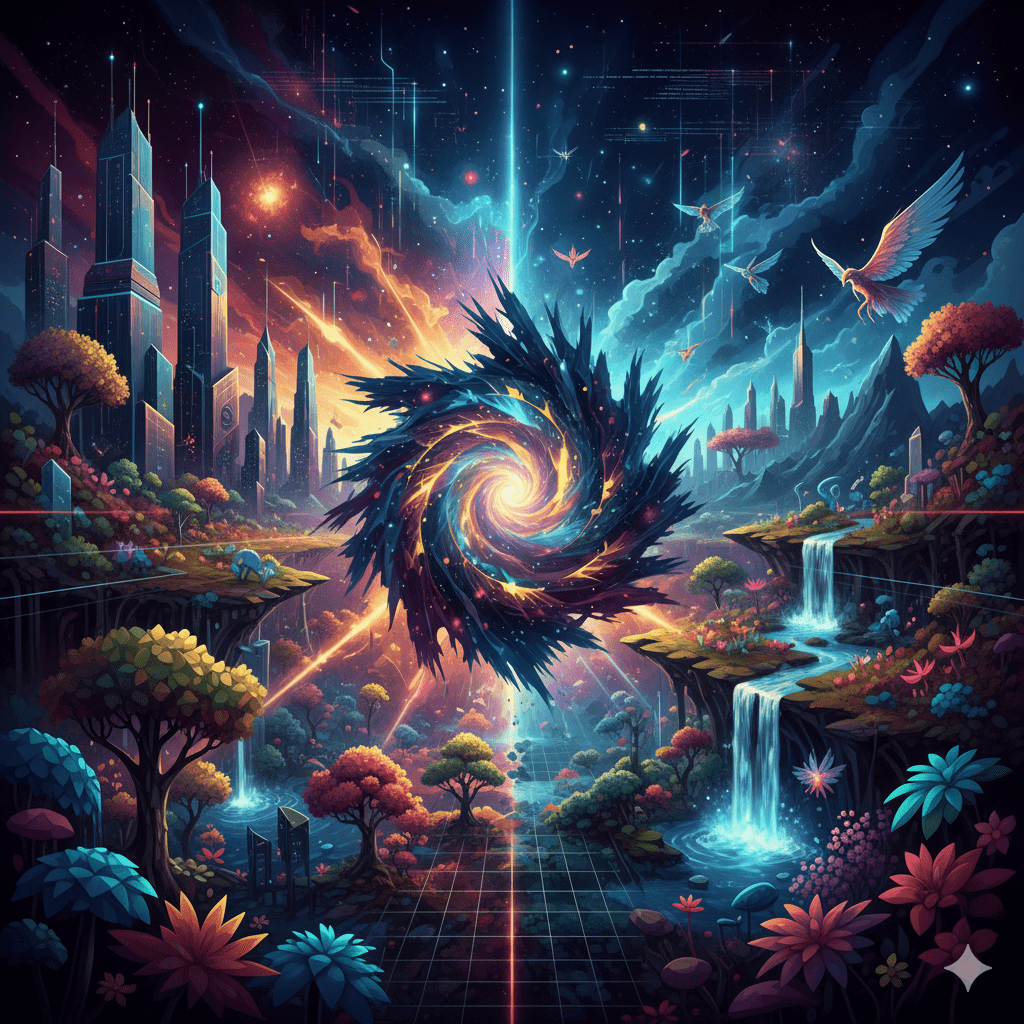
Stable Diffusion: The Ultimate Guide to Create AI Art
Stable Diffusion has revolutionized digital art creation, allowing anyone to generate incredible images using artificial intelligence. This comprehensive guide will teach you everything you need to know to master this powerful tool.
What is Stable Diffusion?
Stable Diffusion is an open-source artificial intelligence model developed by Stability AI that generates high-quality images from text descriptions. Unlike other AI generators like DALL-E 3 or Midjourney, Stable Diffusion can run locally on your computer, offering:
Key Advantages
- Free and open-source: No usage limitations
- Total control: Complete parameter customization
- Privacy: Images are generated locally
- Flexibility: Wide range of models and extensions
- Active community: Thousands of shared models
Installing Stable Diffusion
Option 1: AUTOMATIC1111 WebUI (Recommended)
The most popular web interface for Stable Diffusion:
# Clone the repository
git clone https://github.com/AUTOMATIC1111/stable-diffusion-webui.git
# Navigate to directory
cd stable-diffusion-webui
# Run installer (Windows)
./webui-user.bat
# Run installer (Linux/Mac)
./webui.sh
System Requirements
- GPU: NVIDIA with 4GB+ VRAM (8GB+ recommended)
- RAM: 16GB minimum, 32GB recommended
- Storage: 50GB+ free space
- System: Windows 10+, Linux, or macOS
Option 2: Cloud Alternatives
If your hardware is limited:
- Google Colab: Run Stable Diffusion for free
- RunPod: GPU servers by the hour
- Replicate: API for developers
Getting Started: Your First Image
Basic Prompt
Start with a simple prompt:
"A beautiful sunset over mountains, digital art, highly detailed"
Essential Parameters
- Steps: 20-30 (more steps = higher quality)
- CFG Scale: 7-12 (prompt adherence)
- Sampler: DPM++ 2M Karras (recommended)
- Size: 512x512 or 768x768 to start
Stable Diffusion Models
Main Base Models
1. Stable Diffusion 1.5
- Most stable and compatible model
- Wide range of styles
- Ideal for beginners
2. Stable Diffusion XL (SDXL)
- Native 1024x1024 resolution
- Greater detail and realism
- Requires more resources
3. Stable Diffusion 2.1
- Better text understanding
- Less censorship than SDXL
- Balanced for general use
Popular Specialized Models
- Realistic Vision: Extreme photorealism
- DreamShaper: Artistic versatility
- Anything V3: Perfect anime style
- Deliberate: Art/realism balance
- Protogen: Science fiction
Advanced Prompting Techniques
Professional Prompt Structure
[Subject] + [Action/Pose] + [Setting] + [Style] + [Quality Tags] + [Technical Parameters]
Complete Example:
"A majestic dragon soaring through storm clouds, wings spread wide,
flying over ancient castle ruins, fantasy art style,
ultra detailed, 8k resolution, dramatic lighting,
painted by Greg Rutkowski, trending on ArtStation"
Powerful Keywords
For Quality:
masterpiece, best quality, ultra detailed8k, 4k, highres, absurdresprofessional photography, award winning
For Style:
digital art, concept art, matte paintingoil painting, watercolor, pencil sketchcyberpunk, steampunk, fantasy art
For Lighting:
dramatic lighting, soft lighting, rim lightinggolden hour, blue hour, studio lightingvolumetric lighting, cinematic lighting
Essential Negative Prompts
"lowres, bad anatomy, bad hands, text, error, missing fingers,
extra digit, fewer digits, cropped, worst quality, low quality,
normal quality, jpeg artifacts, signature, watermark, username, blurry"
Advanced Techniques
1. Img2Img (Image to Image)
Transform existing images:
- Denoising Strength: 0.3-0.7 (lower = more similar to original)
- Resize: Keep proper proportions
- Control: Use as base for new creations
2. Inpainting
Edit specific parts of images:
- Select area with mask
- Describe what you want in that area
- Adjust
Masked Contentas needed
3. ControlNet
Precise composition control:
- Canny: Edge detection
- OpenPose: Human pose control
- Depth: Depth control
- Scribble: Sketches to images
4. LoRA (Low-Rank Adaptation)
Lightweight models for specific styles:
- Custom training
- Specific artist styles
- Consistent characters
- Unique concepts
Professional Configuration
Optimized Parameters
For Portraits:
Steps: 25-30
CFG Scale: 8-10
Sampler: DPM++ 2M Karras
Size: 512x768 or 768x1024
For Landscapes:
Steps: 20-25
CFG Scale: 7-9
Sampler: Euler a
Size: 768x512 or 1024x768
For Concept Art:
Steps: 30-40
CFG Scale: 10-15
Sampler: DDIM
Size: 768x768 or 1024x1024
Essential Extensions
- ControlNet: Advanced composition control
- Ultimate SD Upscale: Intelligently improve resolution
- Dynamic Prompts: Automatic variations
- Additional Networks: LoRA support
- Deforum: Animations and videos
Professional Workflows
Realistic Portrait Workflow
- Base prompt: Detailed subject description
- First generation: 512x768, 25 steps
- Selection: Choose best composition
- Refined Img2Img: Denoising 0.4, more detail
- Upscaling: Ultimate SD Upscale 2x-4x
- Inpainting: Final corrections
Concept Art Workflow
- Initial sketch: ControlNet Scribble
- Base generation: With artistic model
- Variations: Dynamic Prompts for options
- Refinement: Img2Img with higher CFG
- Post-processing: Additional effects
Troubleshooting and Optimization
Common Problems
Blurry Images:
- Increase steps (30-50)
- Reduce CFG scale (6-8)
- Change sampler to DPM++ 2M
Incorrect Anatomy:
- Use specific negative prompts
- Apply ControlNet OpenPose
- Train or use anatomy LoRA
Out of Memory (OOM):
- Reduce resolution
- Enable
--medvramor--lowvram - Close unnecessary applications
Performance Optimization
# Optimized launch.py configuration
--xformers --opt-split-attention --opt-channelslast
--medvram # For 6-8GB GPUs
--lowvram # For 4-6GB GPUs
Legal and Ethical Aspects
Copyright
- Base models: Trained with public images
- Commercial use: Generally allowed
- Artist styles: Legal gray area
- Attribution: Recommended but not mandatory
Ethical Best Practices
- Respect rights: Don’t copy styles without permission
- Transparency: Indicate it’s AI-generated art
- Responsible use: Avoid harmful content
- Fair credit: Acknowledge tools used
Additional Resources
Essential Websites
- Civitai: Largest model repository
- Hugging Face: Models and documentation
- r/StableDiffusion: Active community
- OpenArt: Inspiration and prompts
Complementary Tools
- ChilloutMix: Realistic models
- NovelAI: Specific tools
- InvokeAI: Professional alternative interface
- ComfyUI: Advanced visual workflow
Conclusion
Stable Diffusion represents the democratized future of digital artistic creation. With patience, practice, and the techniques in this guide, you’ll be able to create images that compete with traditional art and professional photography.
Next Steps
- Install the basic setup
- Experiment with different models
- Practice prompting techniques
- Join communities
- Share your creations
Generative AI art doesn’t replace human creativity, but amplifies it. Start your creative journey today!
Was this guide helpful? Share it with other creators and keep exploring the fascinating world of generative artificial intelligence.